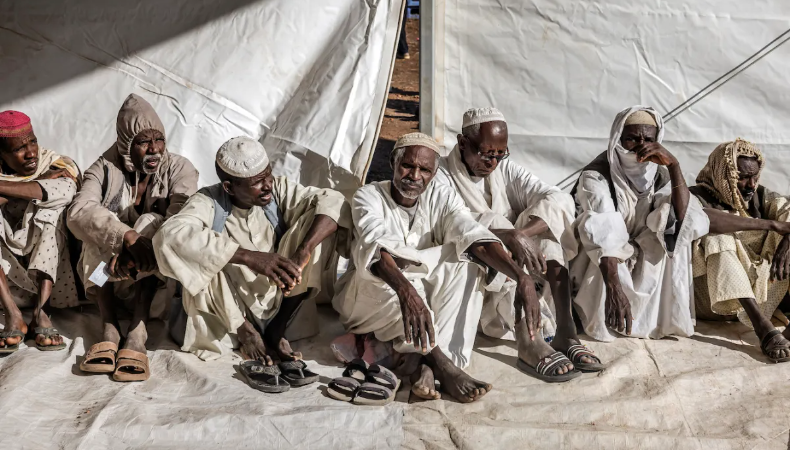The Growing Refugee Crisis: Sudanese Fleeing to Egypt Amid Ongoing Conflict

Sudan has fallen into a terrible war between competing generals since the start of the merciless struggle in April 2023. According to United Nations (UN) estimates, this continuous civil conflict has cost tens of thousands of lives and driven over 11 million people from their houses. Of these, 3.1 million people have fled the turmoil outside of Sudan; Egypt is now the main place they go.
The war has had terrible consequences for the Sudanese people; extensive displacement has presented serious humanitarian problems. Egypt provides a lifeline for many Sudanese, but with the continuous influx of refugees, the situation in the neighboring nation is equally taxing. The flood has severely taxed Egypt’s infrastructure, resources, and services.
Egypt as Sudanese Nationals’ Primary Haven
Egypt is presently the biggest host nation for individuals escaping the Sudanese conflict, home to more than 1.2 million Sudanese refugees as per the most recent UNHCR (United Nations High Commissioner for Refugees) estimate. These numbers cover officially registered refugees as well as those waiting for UNHCR registration. Officially registered around 500,000 Sudanese refugees have already been registered, according to Christine Bishay, an associate external relations officer at UNHCR Egypt; others remain in legal uncertainty in search of formal status.
Now numbering 827,644 people, including migrants from other crisis zones including Syria, South Sudan, and Eritrea, this flood of refugees from Sudan has made Sudanese nationals represent two-thirds of Egypt’s overall registered refugee population. Egypt’s rigorous entrance policies nonetheless still make this the biggest and most easily available haven for Sudanese refugees in the area.
Restricted Access Measures and Risky Pathways
Initially, when the war started, the Egyptian authorities eliminated visa restrictions for Sudanese women, children, and men over 50, therefore offering a quick and relatively temporary haven for people fleeing the fighting. Still, this was just temporary. The Egyptian administration announced fresh limitations by the end of May 2023, requiring all Sudanese citizens to acquire a visa to enter the nation, therefore greatly restricting the ease of access for refugees. Many Sudanese people have been compelled by this change to turn to risky, illegal border crossings, often under the direction of human traffickers along treacherous desert paths.
27-year-old Sudanese lady Raga Ahmed Abdel Rahman, who left her country in August, related her horrific trip to Egypt She paid an outrageous 500,000 Sudanese pounds (about $830) together with sixteen others for a small pick-up truck trip across the desert. She said of the over a day and a half trip that it was “exhausting and terrible.” Sadly, her experience is not unique; many others are compelled to take such chances to flee Sudan’s strife.
Egypt’s Resources and Infrastructure Under Strain
Egypt’s resources have been severely strained by the great flood of Sudanese refugees. Apart from the urgent demands of food, shelter, and medical treatment, the influx of such many migrants strains Egypt’s infrastructure, especially in border areas and metropolitan centers where they usually settle.
The UNHCR expresses worries on the viability of this state of affairs. The UNHCR official for Egypt, Hanan Hamdan, observed that the load on Egypt’s resources is “unsustainable” and urged quick worldwide assistance to aid to lessen the effects of the refugee crisis. Egypt has given these displaced individuals protection, but the lack of enough financial help and resources has left many of them living in cramped quarters with limited access to basic services such education and healthcare.
The Demand for Global Help
Although Egypt has suffered most from the crisis, the UN and humanitarian groups have underlined the necessity of more worldwide assistance to handle the escalating humanitarian tragedy. Still, the money already obtained for help for Sudanese refugees is not enough.
Raising around $1.52 billion, the Sudan Humanitarian Response Plan for 2024 covers just roughly 56.3% of the needed $2.7 billion to meet the needs of the refugees. The financing difference is considerable; without more help, the capacity to give the Sudanese refugees sufficient care and protection would remain under jeopardy.
Encouraging nations and donors to help more with the relief operations, the UNHCR has urged the world community to increase its support. The situation for refugees in Egypt and the surrounding area will continue to deteriorate without significant and consistent financing; long-term prospects for these displaced people will remain dismal.
The Future of Sudanese Exiles
Given Sudan’s war shows no indications of abating, refugee influx into Egypt and other neighboring nations is projected to be continuous. The world community has to unite to guarantee that Sudanese refugees get the help required for survival and reconstruction of their life. Moreover, attempts should be taken to solve the underlying reasons of the violence in Sudan in order to stop more loss of life and migration.
In essence, Egypt is becoming more burdened even while it is still a main haven for Sudanese escaping conflict; quick international action is therefore absolutely essential to provide enough resources and support. The humanitarian catastrophe in Sudan as well as the situation of its displaced people cannot be permanently resolved without group worldwide action.




